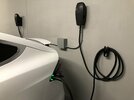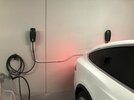My 2018 Model 3 is still very quiet (as is my 2017 Model X). When I took delivery of my 3 I could not find any paint flaws.Lots of creaks and noises on interiors of the 3 and Y over time… Is the paint that bad on the 3 and Y?
My 2013 Model S had some issues but it was an amazing, extraordinary car that never failed to get me to my destination. My 2009 Roadster did have some major issues. I still enjoyed it every time I drove it. Over that timespan Tesla has made massive improvements to their vehicles and will continue to do so.
I have probably almost 3000K on the various Teslas I’ve owned. Teslas are certainly not perfect. No manufacturer makes consistently perfect vehicles. Every car forum online contains numerous complaints because people don’t typically post saying “Well another day of ownership and no problems today.” They post about issues they are having, and that’s fine. But it is easy to lose perspective reading car forums. You are reading personal anecdotes, not data on a random sampling of hundreds of thousands of vehicles produced.
I think that is clearly true.I sometimes wonder if some noises are noticed more in a Tesla because there is not the drivetrain noise that may cover the noise in ICE vehicles.
Last edited:




